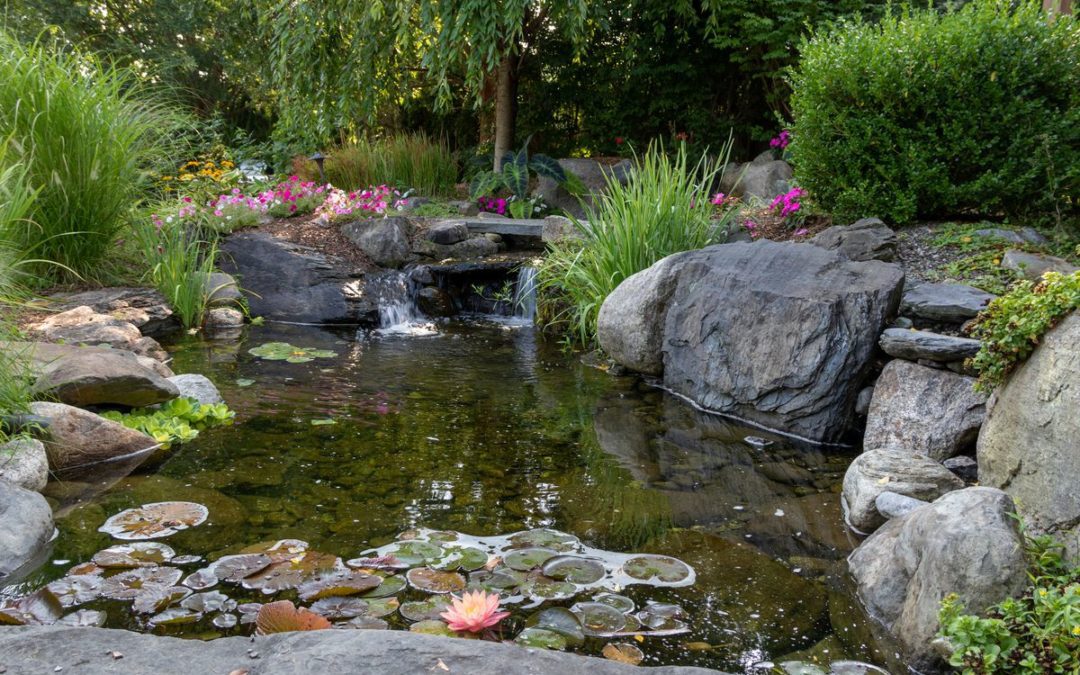Despite the warm days we’ve experienced, the night temperatures are cooling and coloring leaves are falling from most of our trees. And did you know that the average date for the first trace of snow is October 16th? Yikes! Colder weather is certainly on its way making it time to get your ponds and water features ready for the frosty temperatures to come. If you still have leaves clinging to trees, your first step is to cover your pond with netting or a floating row cloth. This will keep the falling leaves and other debris out of the water, lessening the work next spring. Next, pop in a thermometer as water temperature, rather than air temperature, is the most reliable indicator of when it’s time to change your treatments and prepare your fish.
Speaking of fish, as water temperatures cool, it is more difficult for them to digest food properly. Your fish do need to bulk up for the winter, but it is important that they not be overfed. As the water temperatures drop into the low 70s remove any food that isn’t eaten in 5 minutes. And once the water cools to 50 degrees, you can stop feeding them altogether.
It is always a good practice to trim away any dying plant material and that is doubly important now. Fall is also a fabulous time to divide and re-pot any of your hardy water plants. And when the water temperature reaches 60 degrees, remove your tropical plants and store them inside. Lift and trim back the hardy waterlilies and bog plants, resettling the pots into the bottom of the pond.
When the water temperature is below 40 degrees, it’s time to care for the pump and to clean the filters. Remove your pump by loosening the couplings and submerge it in a bucket of water. Thoroughly rinse filter nets and mats, and place them into the bucket. Be sure to store the pump and filter mats in a place where they will not freeze. If you are over-wintering your fish in the pond, install a bubbler pump on an underwater shelf and a 200-watt floating heater. This will provide enough oxygen to the water to meet the needs of the hibernating fish.
Finally, remember that a sleeping pond doesn’t have to be boring. Consider installing some underwater lighting. The effect that lights create in a frozen pond can be very beautiful. And stop in if you have questions. The staff at the Bruce Company are happy to advise you if you have specific concerns about winterizing your water feature.


